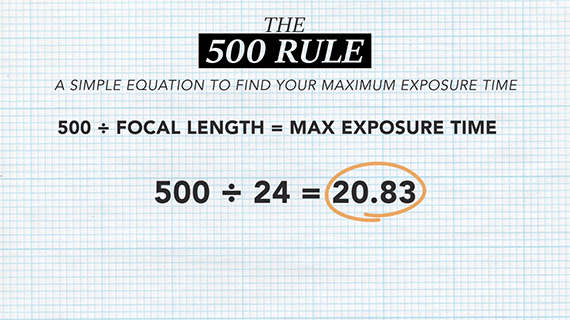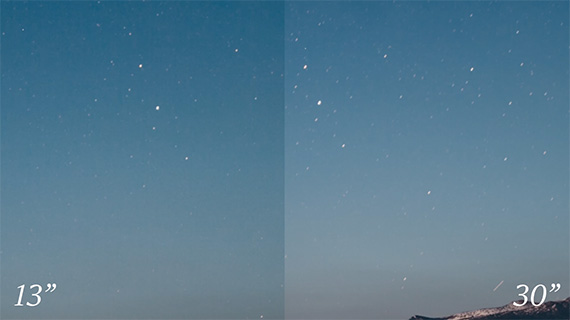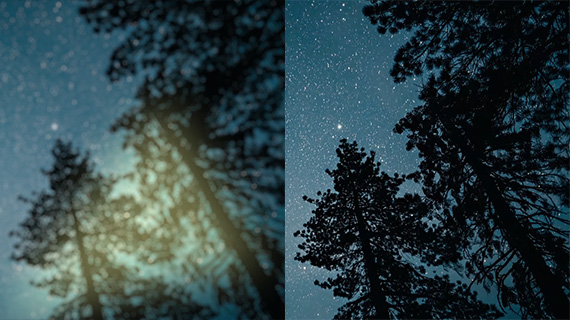Love shooting long exposures of the night time sky but struggle with the exposure and other settings? This simple tutorial by Mango Street might just be what you need to get going:
The Best Lens for Nighttime Long Exposure Photography
The recommended lens for night time sky/star photography is a wide angle with a fast, wide aperture (so that it can take in more light). Mango Street’s recommendation is a 24mm f/1.4 lens.
The 500 Rule
The 500 rule is a simple exposure rule for photographing stars at night without inducing blur. The rule is to divide 500 by your focal length to arrive at the maximum exposure time (without blur).
Here is a side by side comparison of two shots, one at 13 seconds and the other at 30 seconds.
The star trails are quite apparent in the 30 second exposure compared to the 13 second exposure.
Focus
The best way to focus on stars is to use live-view. Zoom in on a cluster of stars. Set your lens focusing to manual. Adjust the focus manually until you have your stars in focus. If you plan on focusing on a foreground subject, such as a tree or a house, use the same technique.
Try using a flash light or a safety lamp to help you focus on foreground subject matter.
Shutter Release
Your hands touching your camera are a prime candidate for camera shake. The best way to avoid it is to use a cable release. The built-in timer on your camera is another alternative to shoot great blur-free photos.
The mirror lock-up option is also useful; it locks the mirror in an up position to minimize camera movement during the exposure.
Don’t Forget to Experiment
Don’t be afraid to experiment with your exposure times. There are a number of parameters that affect your exposure settings: the amount of ambient light in the sky, how close you are to a city, the position of the moon, and so on.
Keep the ISO and aperture as low as possible and only play around with the shutter speed to compensate for the lack of ambient light.
What other tips have you discovered?
Like This Article?
Don't Miss The Next One!
Join over 100,000 photographers of all experience levels who receive our free photography tips and articles to stay current:









Leave a Reply